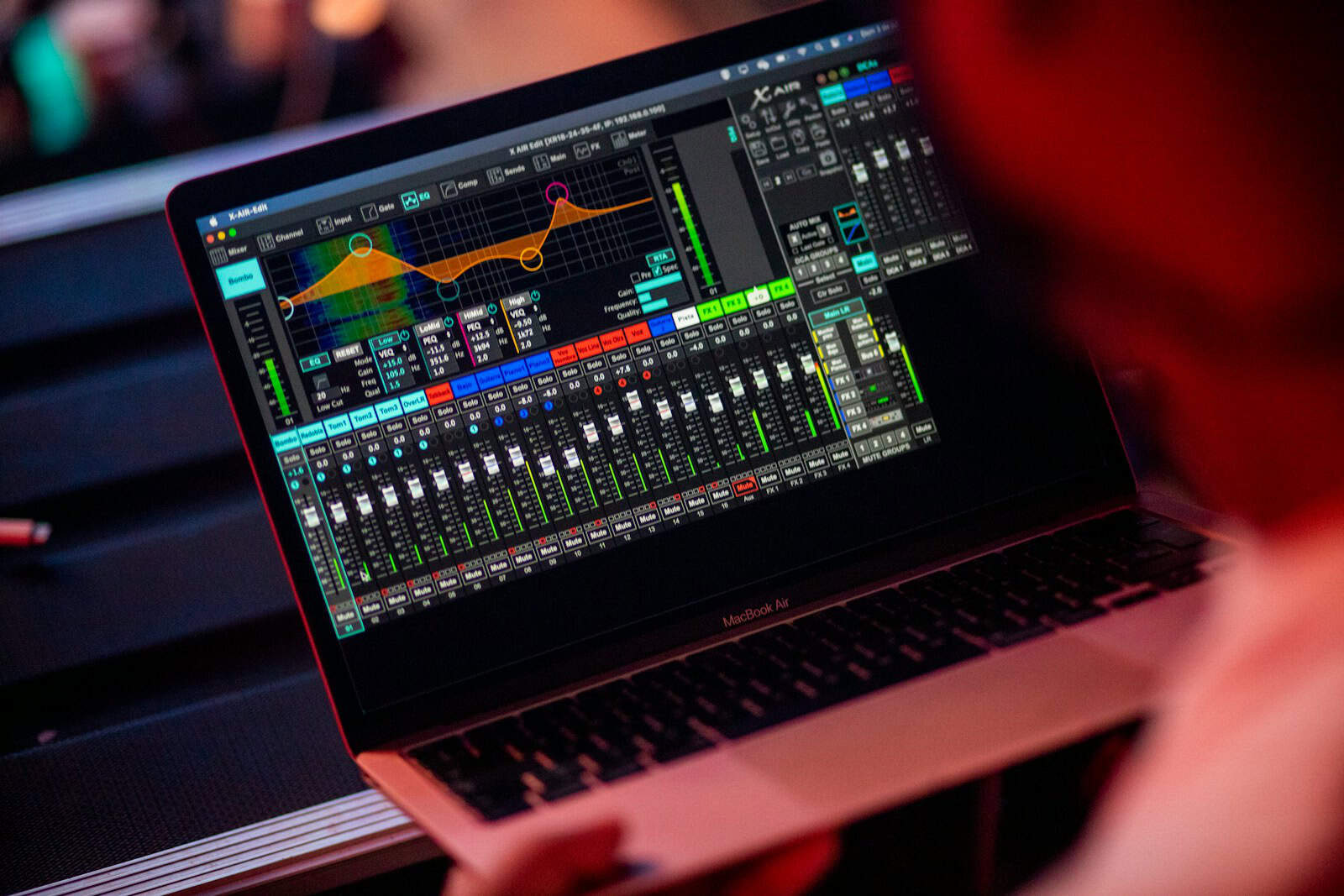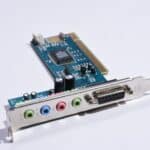Losing sound on your computer can be frustrating, especially when you need audio for work or entertainment. This common problem has several possible causes, from simple volume settings to more complex driver issues. Most computer sound problems can be fixed by checking connections, adjusting settings, or updating audio drivers without needing technical expertise.
Many people panic when their computer goes silent, but the solution is often straightforward. Start by checking if the volume is muted or turned down, both on your computer and any external speakers. Next, verify that the correct audio device is selected in your sound settings. Windows also offers a built-in troubleshooter that can automatically detect and fix many audio problems.
If basic checks don’t work, your audio drivers might need attention. Outdated, corrupted, or missing drivers often cause sound issues. Windows updates can sometimes interfere with audio settings too, so recent system changes might be the culprit.
How to Fix a Computer with No Sound
If your computer suddenly has no sound, it could be caused by anything from muted settings to outdated drivers. Whether you’re using Windows or macOS, here’s a step-by-step guide to troubleshoot and restore your audio.

1. Check the Volume & Mute Settings
- Ensure the volume is turned up using your keyboard or system tray icon.
- Look for a mute icon on your taskbar or menu bar and unmute if necessary.
- Try using physical volume buttons or switches (on laptops and some monitors).
2. Verify the Output Device
Windows:
- Right-click the sound icon in the system tray.
- Select Open Sound Settings.
- Under Output, make sure the correct device (e.g., Speakers, Headphones) is selected.
Mac:
- Go to System Settings > Sound.
- Under Output, choose the proper audio device.
3. Inspect Audio Connections
- Make sure your speakers, headphones, or external monitors are properly plugged in.
- Try unplugging and reconnecting your audio device.
- For Bluetooth devices, ensure they are paired and connected.
4. Restart Your Computer
A simple reboot can resolve many temporary glitches that mute your system’s audio.
5. Run the Audio Troubleshooter (Windows Only)
- Open Settings > System > Sound.
- Scroll down and click Troubleshoot.
- Follow the on-screen steps to detect and fix sound issues automatically.
6. Update or Reinstall Audio Drivers (Windows)
- Open Device Manager.
- Expand Sound, video and game controllers.
- Right-click your audio device and choose Update driver.
- Select Search automatically for drivers.
- If that doesn’t work, choose Uninstall device, then reboot your PC to reinstall the driver.
7. Reset the Core Audio (Mac Only)
If you’re on macOS and still getting no sound:
- Open Activity Monitor (Applications > Utilities).
- Search for coreaudiod.
- Select it and click the X to force quit. It will automatically restart.
8. Check App or Browser Sound Settings
- Some apps or browser tabs might be muted individually.
- Look for mute buttons or sliders within media players, YouTube, Zoom, etc.
9. Test with Another User Profile or Guest Account
Sometimes user-specific settings or corrupt profiles can cause issues. Test sound on a different account to see if the problem is isolated.
10. Consider Hardware Issues
- Try another pair of headphones or external speakers.
- If no devices work, your internal sound card or speaker may be damaged and require repair or replacement.
Following these steps should help you isolate and fix most sound problems on your computer. If nothing works, a visit to a technician might be your next step.
Key Takeaways
- Check physical connections and volume settings before attempting more complex solutions.
- Use Windows built-in sound troubleshooter to automatically identify and fix common audio problems.
- Update or reinstall audio drivers when basic troubleshooting doesn’t resolve the issue.
Understanding Sound Issues in Windows 10
Sound problems in Windows 10 can be frustrating when you’re trying to watch videos, listen to music, or join video calls. These issues often have simple solutions once you understand what’s causing them.
Overview of No Sound on Computer
Sound issues in Windows 10 can happen suddenly, even on computers that worked fine before. Many users report losing audio after installing Windows updates or changing hardware settings.
The problem might affect all sounds or just specific applications. Sometimes the volume icon shows a red X or displays as muted even when you try to increase the volume.
Windows 10 has several audio pathways including speakers, headphones, HDMI connections, and Bluetooth devices. Each pathway can have its own separate issue.
When troubleshooting, it’s important to check if the problem affects all audio outputs or just one specific device.
Common Causes of Sound Issues
Hardware problems are often the culprit behind no sound issues. Loose connections, damaged speakers, or faulty sound cards can all cause audio to disappear.
Software glitches are equally common. After a Windows 10 update, audio drivers may become outdated or corrupted. This happens because updates sometimes change how the system interacts with audio hardware.
Other common causes include:
- Incorrect default device settings
- Muted audio at system or application level
- Audio enhancements causing conflicts
- Windows audio service not running properly
- Outdated or corrupted drivers
Third-party applications can also interfere with Windows sound settings. Some security software might block audio processes, thinking they’re suspicious programs.
Bluetooth connectivity issues often appear as no sound problems when using wireless headphones or speakers.
Checking Basic Sound Functions
When your computer has no sound, start with the simplest checks before moving to more complex solutions. Often, the problem stems from basic settings or connections that can be fixed in seconds.
Check Volume Levels and Mute Settings
First, look at the volume icon in your taskbar (usually in the bottom right corner). Click on it to make sure the volume slider isn’t set too low or muted. A muted speaker will show an “X” or slash through it.
Right-click on the same audio icon and select “Open Volume Mixer” to check if specific apps are muted. Some programs have their own volume controls separate from the main system volume.
Press function keys on your keyboard that control volume (often F1-F12 with a speaker symbol). Many laptops require holding the Fn key while pressing these.
Check that Windows hasn’t muted your sound device. Go to Settings > System > Sound and verify the output device is set correctly and not muted.
Verify External Speakers or Headphones Connection
Examine all physical connections between your computer and speakers or headphones. Make sure cables are firmly plugged into the correct audio ports. The headphone jack typically has a small headphone symbol next to it.
If using external speakers, check that they’re powered on and their volume is turned up. Look for a power light on the speakers to confirm they’re receiving electricity.
Try another set of headphones or speakers to determine if your audio device is the problem. This simple test can save hours of troubleshooting software issues.
For Bluetooth headphones, ensure they’re properly paired with your computer and selected as the output device. Disconnect and reconnect them if necessary.
Using Windows Troubleshooter
Windows has a built-in tool to help solve sound problems on your computer. This troubleshooter can find and fix common audio issues automatically without needing technical skills.
Running the Playing Audio Troubleshooter
To use the Windows audio troubleshooter, you have several ways to access it. The simplest method is to type “audio troubleshooter” in the Windows search bar and click on “Find and fix problems with playing sound.” This opens the troubleshooting wizard.
You can also find it through Settings. Go to Start > Settings > System > Sound > Troubleshoot. When the troubleshooter opens, select the audio device you want to fix.
The troubleshooter will scan your system for common audio problems. It looks for issues like:
- Muted or low volume settings
- Incorrect audio device selection
- Driver problems
- Hardware conflicts
Follow the on-screen instructions as the troubleshooter works. It might ask you questions or require you to confirm certain actions.
If the troubleshooter finds issues, it will attempt to fix them automatically. After completion, test your sound to see if it works. Sometimes you’ll need to restart your computer for changes to take effect.
Managing Audio Drivers
Audio drivers are vital for sound to work properly on your computer. When your computer has no sound, checking and fixing these drivers often solves the problem.
Update or Reinstall Audio Drivers
Audio driver problems commonly cause sound issues in Windows. To update your drivers, right-click the Start button or press Windows + X and select Device Manager. Look for the “Sound, video, and game controllers” section and expand it.
Right-click on your sound card or audio device and select “Update driver.” You have two options:
- Search automatically for drivers
- Browse my computer for drivers
If automatic search doesn’t work, try the manual method. Select “Browse my computer for drivers” then “Let me pick from a list of available drivers.” This lets you choose a compatible driver.
Sometimes reinstalling works better than updating. To do this:
- Right-click the audio device
- Select “Uninstall device”
- Restart your computer
- Windows will try to reinstall the driver automatically
If hidden devices are causing problems, open Device Manager, click “View” and select “Show hidden devices.” This reveals audio devices that might be disabled or hidden.
Roll Back Drivers After a Recent Update
Windows updates sometimes replace working audio drivers with versions that don’t work properly on your system. If your sound stopped working after a recent Windows update, rolling back to the previous driver may fix it.
To roll back an audio driver:
- Open Device Manager
- Expand “Sound, video, and game controllers”
- Right-click your audio device
- Select “Properties”
- Click the “Driver” tab
- Select “Roll Back Driver” (if available)
If the roll back option is grayed out, you’ll need to manually install an earlier driver version. Search for your computer model and “audio drivers” to find official drivers from your manufacturer’s website.
Some Windows updates (like KB0016248) specifically cause audio problems. In these cases, switching to Microsoft’s built-in HD Audio driver instead of manufacturer-specific drivers like Realtek might work better. This approach often solves issues when repeated reinstallation of brand-specific drivers fails.
Adjusting Audio Settings in Windows
Windows offers several options to fix sound problems through its settings menus. Most audio issues can be resolved by checking a few key settings and making simple adjustments.
Navigating to Sound Control Panel
The Sound Control Panel in Windows is the main hub for audio configuration. To access it, right-click the speaker icon in the taskbar and select “Open Sound settings.” For more detailed options, click “Sound Control Panel” on the right side of the Settings window.
You can also reach it through Control Panel. Press Windows key + X, select “Control Panel,” then “Hardware and Sound,” and finally “Sound.”
Once open, the Sound Control Panel shows all audio devices connected to your computer. The device with a green checkmark is your current default device. If the wrong device is selected, right-click the correct speaker or headphones and choose “Set as Default Device.”
Configuring Audio Settings and Enhancements
Select your audio device and click “Properties” to access detailed settings. The “Levels” tab lets you adjust volume and balance. Make sure your device isn’t muted and the volume is turned up.
On the “Enhancements” tab, you’ll find options that can improve your audio experience:
- Bass Boost: Enhances low-frequency sounds
- Virtual Surround: Creates a more immersive audio experience
- Loudness Equalization: Maintains consistent volume levels
Sometimes these enhancements can cause audio problems. Try unchecking “Enable audio enhancements” to see if that resolves your sound issues. Click “Apply” then “OK” to save changes.
Ensuring Exclusive Control Settings are Configured Properly
The “Advanced” tab contains important settings that affect how programs use your audio device. Under the “Exclusive Mode” section, you’ll find two options that control how applications access your sound device.
The first option, “Allow applications to take exclusive control of this device,” lets programs bypass Windows’ audio mixer. The second, “Give exclusive mode applications priority,” determines if these programs get priority access.
If you’re having issues with specific applications not playing sound, try toggling these settings. Some programs work better with exclusive control enabled, while others may conflict.
Also check the “Default Format” dropdown menu. Sometimes selecting a different sample rate and bit depth can fix audio problems. After making changes, click “Test” to verify sound is working properly.
Windows Audio Service and Sound-Related Services
The Windows Audio Service plays a crucial role in managing your computer’s sound functionality. When your PC has no sound, this service is often the culprit, along with several related audio services that work together.
Restarting Windows Audio Service
The Windows Audio Service sometimes stops working even when it appears to be running. To restart it, press the Windows logo key + R to open the Run dialog, then type “services.msc” and press Enter.
In the Services window, scroll down to find “Windows Audio.” Check if its status shows as “Running” and the Startup type is set to “Automatic.”
If the service is running but you still have no sound, right-click on it and select “Stop.” Then right-click again and select “Start” to restart it.
This simple restart often fixes sound problems immediately without needing further troubleshooting. Some users report that they need to do this after every system startup, which indicates there might be deeper issues.
Checking Dependencies and Related Services
Windows Audio doesn’t work alone. It relies on several dependent services that must also be running correctly. The most important related services include:
- Windows Audio Endpoint Builder
- Remote Procedure Call (RPC)
- Multimedia Class Scheduler
To check these services, follow the same steps to open Services (services.msc). Verify that each service is set to “Automatic” startup and shows “Running” status.
If any service is stopped, right-click it and select “Start.” For long-term fixes, make sure their startup type is set to “Automatic.”
Sometimes sound issues occur only on specific user accounts. This suggests profile-specific problems rather than system-wide service failures. In these cases, creating a new user profile might solve the problem more efficiently than troubleshooting services.
Reverting System Changes
Sometimes sound issues happen after making changes to your computer. Going back to when everything worked can fix these problems.
Performing System Restore to a Previous Point
System Restore helps fix sound problems by returning your computer to a time when audio worked properly. This tool is especially useful when sound stops after software updates or driver changes.
To use System Restore:
- Click the Start button
- Go to All Programs > Accessories > System Tools
- Select System Restore
- Choose “Select a different restore point” and click Next
- Pick a date when your sound was working
- Follow the on-screen instructions to complete the process
Your computer will restart during this process. Don’t worry about losing documents or pictures – System Restore doesn’t affect personal files. It only changes system files and settings.
After the restore completes, test your speakers to see if sound has returned. If not, you might need to try an earlier restore point or explore other solutions.
Exploring Advanced Solutions
When simple fixes don’t solve your computer’s sound problems, it’s time to look at more technical solutions that involve system settings and hardware components.
Adjusting BIOS/UEFI Settings
Sound problems sometimes stem from your computer’s BIOS or UEFI settings. To access these settings, restart your computer and press the designated key during startup (often F2, F10, or Delete). The key varies by manufacturer.
Look for audio-related settings in the BIOS menu. Some computers have options to enable or disable the onboard audio controller. Make sure this setting is enabled.
If you have multiple audio devices, check the priority settings. Your computer might be trying to use a disabled or disconnected audio device because it’s set as the primary option.
After making changes, save and exit the BIOS. Your computer will restart with the new settings applied. If the sound remains broken, you can return to BIOS and restore default settings.
Exploring Hardware Issues
Physical problems often cause sound failures. Check all cable connections to your external speakers. Loose or damaged cables can prevent audio transmission.
Try plugging your speakers or headphones into a different device to verify they work properly. If they function elsewhere, the issue lies with your computer.
For laptop users, internal speakers can fail due to physical damage or disconnection. Listen closely for any unusual buzzing or crackling that might indicate damaged speakers.
Sound cards in desktop computers can become loose or fail. Open your computer case (after powering down completely) and check that the sound card is properly seated in its slot.
Dust buildup can also cause hardware failures. Carefully clean internal components with compressed air, keeping the nozzle at least 6 inches away from components to avoid damage.
Utilizing Manufacturer Software
Many computer manufacturers offer their own audio software that can fix sound problems. These programs often have features not found in Windows’ basic sound settings.
Installing and Configuring Proprietary Audio Software
Computers from brands like Dell, HP, and Lenovo come with special audio software. Look for programs like Intel Audio Studio, Realtek HD Audio Manager, or Waves MaxxAudio on your system. If missing, you can download them from the manufacturer’s website.
To install manufacturer audio software, visit your computer brand’s support page. Search using your computer model and “audio drivers.” Download the latest version that matches your Windows version.
After installation, open the program from your Start menu. Most manufacturer audio tools let you adjust sound profiles for different uses like music, movies, or games.
These programs often include helpful troubleshooting tools. Look for “diagnostics” or “troubleshooting” sections that can find and fix common sound issues automatically.
Some Intel Audio software includes enhancers that improve sound quality. These features can boost bass, improve voice clarity, or reduce background noise.
Restart your computer after making changes to ensure they take effect properly.
Considering Alternate Connection Methods
Sometimes audio issues can be solved by trying a different way to connect your speakers or headphones. When your main connection method isn’t working, exploring alternatives can quickly get your sound back.
Troubleshooting Bluetooth Audio Devices
Bluetooth speakers and headphones can sometimes disconnect or fail to pair properly. If your Bluetooth audio device isn’t working, try turning it off and on again. This simple step often fixes connection problems.
Make sure your computer’s Bluetooth is enabled. Look for the Bluetooth icon in your taskbar or settings menu. If you don’t see it, you might need to turn it on.
Try removing the device from your computer’s paired devices list and then pairing it again. This creates a fresh connection that might solve the problem.
Check the battery level of your Bluetooth device. Low batteries can cause poor connections or no sound at all. Charge your device if needed.
If your computer has multiple Bluetooth audio devices connected, make sure the right one is selected as the default output device in your sound settings.
Understanding Windows Update Impact
Windows updates can sometimes disrupt your computer’s sound functionality. When Microsoft releases updates, they may change how your audio drivers work or reset your sound settings.
Resolving Issues Caused by Windows Updates
First, check if your audio drivers need attention. After a Windows update, drivers sometimes become outdated or corrupted. Open Device Manager by right-clicking the Start button and selecting “Device Manager.” Look for the “Sound, video and game controllers” section. If you see any yellow warning symbols, right-click the audio device and select “Update driver.”
Try the built-in Windows audio troubleshooter. Click Start, type “Troubleshoot” and press Enter. Find the Audio option and run it. This tool often fixes common sound problems.
Check your default playback device settings. Right-click the speaker icon in your taskbar and select “Sound settings.” Make sure the correct device is set as default.
Sometimes a simple restart helps. Updates often require a computer reboot to properly apply changes to your system.
If nothing works, consider rolling back the audio driver. In Device Manager, right-click your audio device, select “Properties,” go to the “Driver” tab, and click “Roll Back Driver” if available.
Frequently Asked Questions
Sound problems can be frustrating when using your computer. Here are answers to common questions about fixing audio issues on various Windows systems.
What steps can I follow to troubleshoot sound issues on Windows 10?
First, check your volume settings by clicking the speaker icon in the taskbar. Make sure the volume is turned up and not muted. If that doesn’t work, try plugging in headphones to see if sound works through them.
Next, restart your computer, as this often fixes temporary audio glitches.
If you still have no sound, open Sound settings by right-clicking the speaker icon and selecting “Open Sound settings.” Check that the correct output device is selected.
Where can I find the audio troubleshooter in Windows 11 for resolving sound problems?
In Windows 11, click on the Start button and select Settings. Then navigate to System > Sound.
Under the Sound section, scroll down to find “Troubleshoot” near the bottom of the page. Click on it to run the audio troubleshooter.
The troubleshooter will scan your system for common sound problems and attempt to fix them automatically.
How can I update or reinstall Realtek Audio drivers to fix sound issues on my computer?
To update Realtek Audio drivers, open Device Manager by right-clicking the Start button and selecting “Device Manager.” Expand the “Sound, video and game controllers” section.
Right-click on your Realtek Audio device and select “Update driver.” You can choose to search automatically for drivers or browse your computer for driver software.
To reinstall the driver, right-click the device and select “Uninstall device.” Restart your computer, and Windows will reinstall the driver automatically.
What are the potential reasons for sudden loss of sound on a computer?
Hardware failures like damaged speakers or headphone jacks can cause sound loss. Loose cable connections between speakers and the computer may also be responsible.
Software issues include corrupted or outdated audio drivers, Windows updates that affect sound settings, or conflicting applications.
Sometimes background processes or services related to audio might crash or stop working properly.
How does one reset computer sound settings to default?
To reset sound settings in Windows, go to Start > Settings > System > Sound. Under the “Advanced” section, find “Reset.”
Click on “Reset” and confirm your choice. This will return all sound-related settings to their original state.
After resetting, restart your computer for the changes to take full effect.
In what ways can I diagnose hardware related sound problems on a PC?
Test different audio output devices like external speakers or headphones to determine if the problem is with a specific device or the computer itself.
Check all physical connections. Make sure cables are firmly plugged in and not damaged. Look for bent pins in audio jacks.
Listen for unusual noises that might indicate speaker damage. No sound at all could mean a hardware failure in the sound card or integrated audio on the motherboard.







